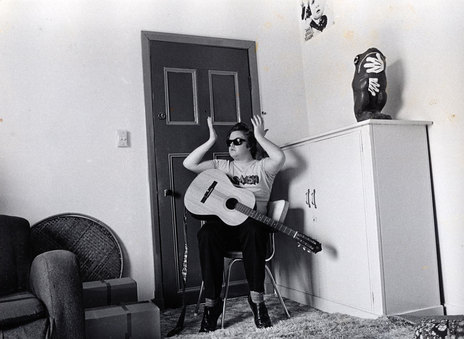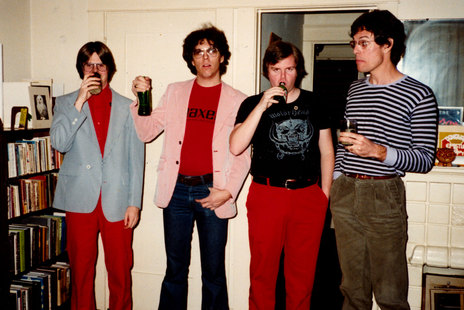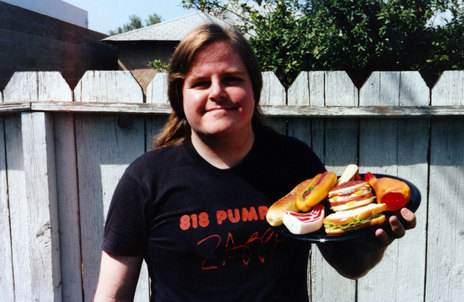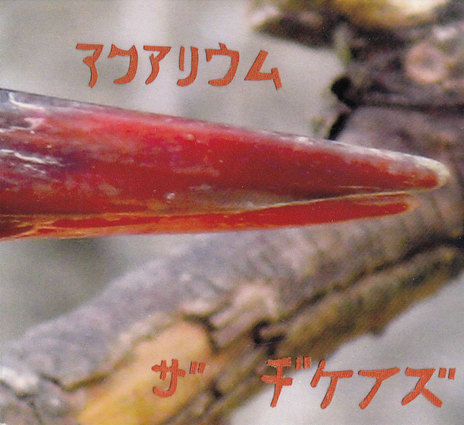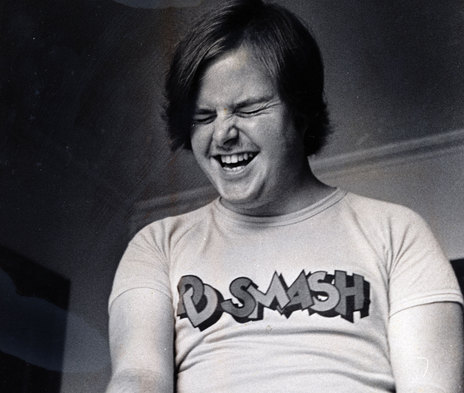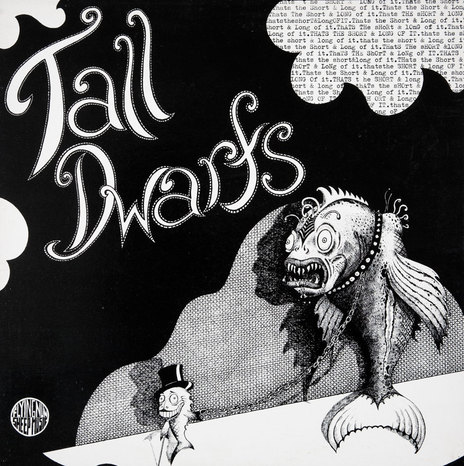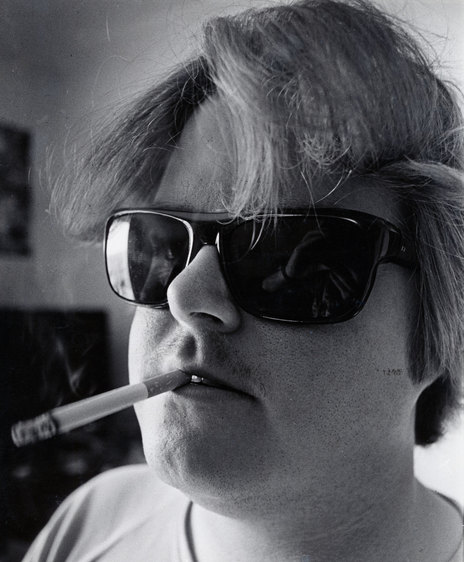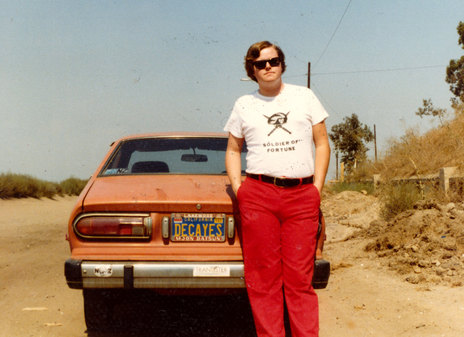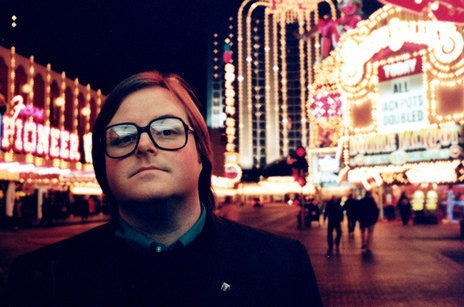Between 1980 and 1987, back when international travel still cost a bomb, he came here countless times, madly collecting any New Zealand-originated record he could find, taking in local gigs, and meeting the protagonists in local media, the record industry (such as it was) and the musicians themselves. He even ended up blowing clarinet on an EP by one of his heroes, Chris Knox – The Short & The Sick Of It EP by the Tall Dwarfs – and “participating” in the infamous 1984 Queen Street Riot at the “Thank God It's Over” free concert in Aotea Square, Auckland.
Kane – who back then worked for a record importer in his native Long Beach, California – first chanced across New Zealand music when attending a Split Enz concert in 1977. Writing on his blog site Ron Kane Files, Kane notes: “Working in a hippie record store, I was given free tickets to see Split Enz at The Golden Bear, a nightclub in Hunting Beach, CA. A mellotron on stage! Singing and dancing! Free drinks!”
In 2015, Kane still contends that Mental Notes (1975) is one of the first great albums recorded by a New Zealand band – “World class stuff! And Second Thoughts (1976) is a spit-polished version of approximately that material, recorded in England, properly.”
He could see that the musical DNA was more closely related than we realised.
But he was hooked (line and sinker) on the notion of a country with superior pop when an English friend sent him a copy of the AK79 punk compilation, turning him on especially to The Swingers and Toy Love.
Arriving here at a time when there was a huge rift between punk/ post-punk and commercial rock bands, Kane insisted that The Gordons were world-beatingly great, but so too was DD Smash. For Kane, there was no gulf between the different aesthetics and methods and haircuts: he could see that the musical DNA was more closely related than we realised.
“I walked down the road hedged with roses in Te Awamutu, as one presumes Finn and Judd did. I met Mike Chunn in Auckland, and he was absolutely super professional and amazing towards me, giving me New Zealand music videos, etc. It took the entire electrically recorded output of New Zealand on vinyl to reassure me that Mental Notes wasn’t just a fluke good album.”
Kane then went back home to champion New Zealand music in North America by cherry-picking those he considered were part of a genuine New Zealand vanguard – including Blam Blam Blam, Mi-Sex, Hello Sailor, Citizen Band and The Gordons – and “imported tons of NZ records, literally” to sell there.
Kane became enamoured of all things New Zealand (as you do), getting into trouble with American customs for importing large consignments of Cadbury Crunchy bars, and marvelling at the cheek of calling an alcohol retailer Super Liquor Man.
But there was more to Ron Kane than his avid record collecting and importing and promoting of New Zealand pop. From the mid-1970s, he’d been the chief facilitator, recordist and multi-instrumentalist for a uniquely oddball group called The Decayes.
Achieving the distinction of being one of the bands named on the legendary bucket list of UK group Nurse With Wound on their debut 1979 album, The Decayes broke just about every rule in the book, and anticipated several trends by several decades. Releasing five albums between 1978 and 1983, with fluctuating line-ups but always presided over by Kane, The Decayes maintained a subversive punk attitude, while the music itself ranged from Kosmiche soundscapes to mutant pop. Long before lo-fi became a “thing”, The Decayes home-recorded their albums on hissy two-track reel-to-reels, and released them in hand-drawn limited editions of only a few hundred copies, most of which were distributed in Europe.
Imaginative and drawing honestly on the suburban Long Beach experience, The Decayes oeuvre has stood the test of time, genuine “outsider” rock that still can’t be comfortably posited in any known bracket. The aura around The Decayes is further enhanced by friends (and guest musicians) like Ace Farren Ford (of the hugely influential Los Angeles Free Music Society) and Rick “Hatsize” Snyder (of Captain Beefheart’s Magic Band).
All very interesting, but what, you may ask, has that got to do with New Zealand? Well, Kane’s fascination with our noisyland leeched into his music, as well. The best Decayes album, 1981’s horNetZ, found Kane experimenting with collage, tape editing and “found sound”, reflecting the influence of early Frank Zappa and Can’s Holgar Czukay. Kane capitalised the N and Z to indicate his New Zealand connection, which was illustrated by the fact that portions of the record were recorded with the involvement of unnamed local musicians at Wellington’s possibly mythical Frame Sound studio.
The last Decayes album, Ten Guitars (1983) was only released in New Zealand, and Jayrem boss James Moss can still be heard quietly complaining that it was the worst selling item in his catalogue. Kane turned up in New Zealand in early January 1983, intending to get his latest album pressed here, but finding all the pressing plants closed. Moss agreed to take on the project, and I have to confess that I played a small part in it: helping to “design” the cover. As Kane notes in the liner notes to the 2004 CD reissue of horNetZ, “The cover was designed in one afternoon with my friend, journalist Gary Steel – we were not thinking about anything. The original title of the illustration was ‘Clown Vomit’. For the back cover of the LP, we had some circles left over. We placed them randomly. Years later, I was asked why we put a map of France on the LP cover.”
Explaining the origin of the album’s name, Kane writes: “I asked Gary, ‘what would I have to name an LP to get New Zealanders interested in it?’ He said Ten Guitars, which was a song by Engelbert Humperdinck that was popular among Maoris (New Zealand’s indigenous people). It was our first printed cover!”
He calculates that he’s got every single New Zealand album released in the 1980s, along with mint copies of even the most negligible releases.
Kane’s interest in New Zealand music waned with the Flying Nun era and the inevitable homogenisation of New Zealand pop as it began emulating American commercial sounds in an effort to win a place on radio playlists. But today, his immense (1500-plus albums and a load of singles) collection of historic (and many impossibly rare) New Zealand music artifacts is still intact. Recently retired from his day job, Kane has been cataloguing his New Zealand collection, and attempting to find out the story behind such early 1980s obscurities as Aspic’s Absconded Damply with its handmade sandpaper cover. He calculates that he’s got every single New Zealand album released in the 1980s, along with mint copies of even the most negligible releases, singling out a Roger Gascoigne release as a tangible example! Kane also has a huge stash of videotapes containing music clips and whole episodes of shows, including Radio With Pictures, that New Zealand friends sent him in the 1980s, for many of which original copies no longer exist.
As for The Decayes, after Ten Guitars the group fell apart, but in January 2014 a reformed version of the group released a brand new album, Aquarium.
*
Ron Kane, a great friend to New Zealand music, passed away on 30 November 2017. Gary Steel, who was a friend for over 30 years, has written a moving tribute at the Witchdoctor site.
